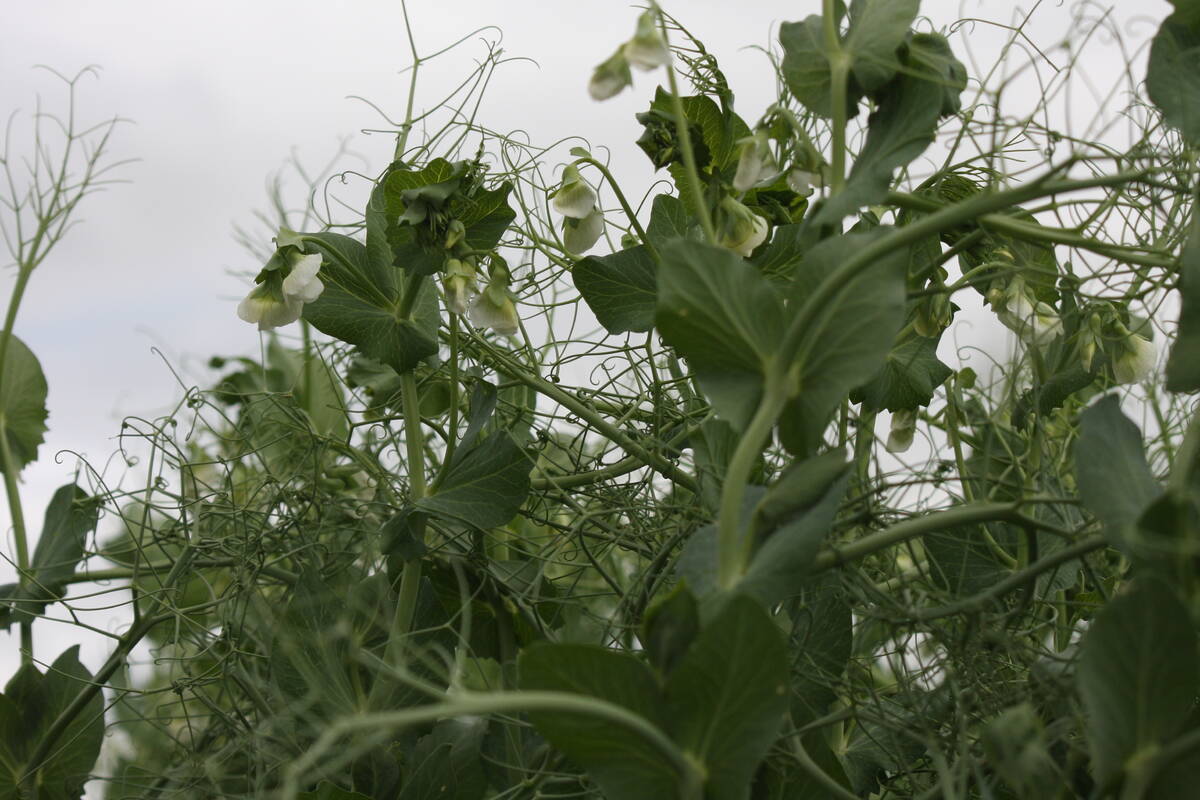Did you ever think that a bomb blast in Saudi Arabia or a chicken disease in France would affect your canola price?
They did last week and might do so again in the future.
Of course, grain prices are largely determined by supply and demand and for oilseeds that currently means that prices are depressed because there is more supply of canola and soybeans than there is demand.
But if supply and demand were the only factors that affected prices, then grain futures traders wouldn’t have much to do and farmers wouldn’t need to tune into noon hour farm radio reports or check the web when they get in from chores.
Read Also

High pea yields shock farmers
There is going to be a massive pea carryout at the end of this crop year.
The daily fluctuation of grain prices is tied to the news flow to traders, who weigh its probable impact on the fundamentals of supply and demand.
And last week a lot of news on the wire services was about avian flu in Europe.
France confirmed H5N1 virus in a couple of wild ducks early in the week and on Feb. 24 in a flock of turkeys. The latter was the first time H5N1 was found in a European domesticated flock.
French poultry producers estimated that since November, when avian flu worries began to build in Europe, they have lost 30 percent of their sales.
The virus was also confirmed in wild birds in Hungary, Austria, Greece, Romania, Italy and Eastern European countries. Several countries have ordered domestic flocks indoors and France has started vaccinating birds.
Cases were also recently confirmed in Nigeria and Niger in Africa, and in India.
The danger to humans from the flu strain is negligible. Humans get it only through direct contact with infected birds or uncooked poultry meat or eggs. Cooking kills the virus.
However, people hear about the potential for flu pandemics and get frightened and stop eating poultry. Consumption has dropped in affected areas. Also, an affected country’s poultry exports stop. As of Feb. 27, 20 countries had full or partial bans on French poultry.
Grain traders expect this will cause poultry producers to reduce their flocks and that will, in turn, reduce demand for feed, particularly soymeal. That weighs down the price of soybeans, which also affects canola prices.
While worries about avian flu weighed on grain markets, the other news that caught traders’ attention last week was violence and terrorism in oil exporting countries.
On Feb. 24, a group of Saudi suicide bombers tried to drive two explosives-laden cars into a major Saudi oil processing plant but were thwarted by security guards.
Worries that this might be the start of sustained terrorist attacks on Saudi Arabia’s ability to export oil caused investors to bid up the price of oil and also to pour dollars into gold, perceived as a safe haven for investments.
But in the sometimes difficult-to-understand world of commodities, buying gold also caused investors to buy corn and soybeans.
The theory is that problems that drive oil prices higher could lead to inflation in developed countries. Commodities prices generally rise during bouts of inflation whereas other investments fall in value, so investors see commodity funds as a hedge against inflation. As investors buy commodity funds, the managers of those funds buy commodities futures, including grains and oilseeds, driving their price higher.
These are examples of the factors that push grain prices around daily by a few pennies per bushel or dollars per tonne. But they also have the potential to have longer-term consequences.
With avian flu, if the problems continue to be limited to birds dying and if authorities can calm consumer fears, it may cease being a concern to grain markets. If a few people in the developed world die from it, then there is a bigger worry and if the greatest fear becomes reality, that the virus mutates and becomes one that is transmitted from human to human, then all bets are off.
On the commodity investment front, financial newspapers are increasingly running stories quoting investment gurus and commodity fund managers referring to agricultural commodities as sort of the last best investment target. Their reasoning is that crop commodities haven’t already seen a price run up like metals, energy and minerals have. Crops are also seen as a hedge against inflation, stocks of wheat and corn are tightening and there is huge potential demand from China and India.
Such talk is likely to keep investors interested in grain markets and increases the likelihood of them jumping on any rally and fueling it into a speculative frenzy.














